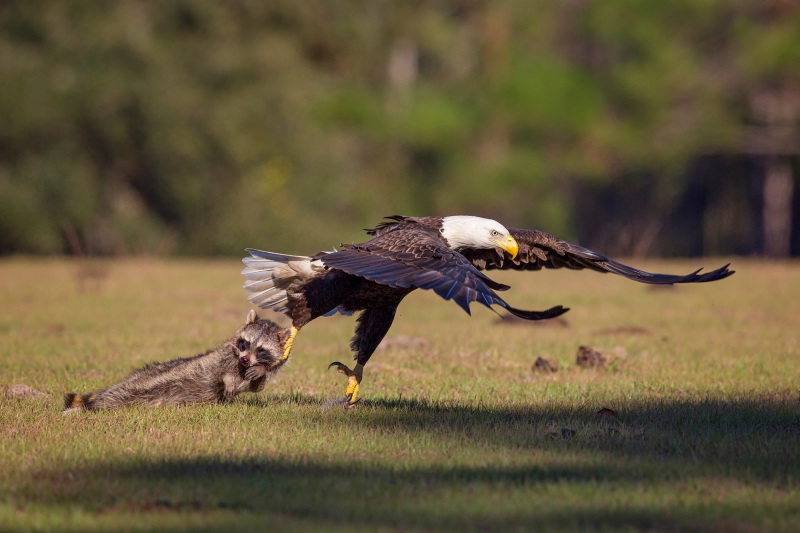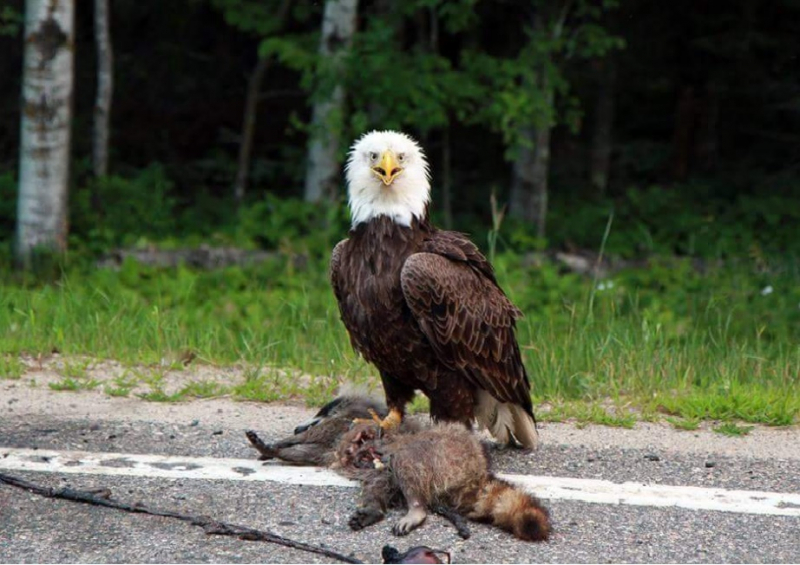The bald eagle
The bald eagle (Haliaeetus leucocephalus) is a North American bird of prey. A sea eagle has two subspecies and forms a species pair with the white-tailed eagle, which occupies the same Palearctic niche as the bald eagle. Its range encompasses the majority of Canada and Alaska, the whole contiguous United States, and northern Mexico. It can be found around huge amounts of open water with enough food and old-growth trees for nesting.
The bald eagle is an opportunistic eater that primarily feeds on fish, which it swoops down on and snatches with its talons from the water. It has the largest nest of any North American bird and the largest tree nest ever recorded for any animal species, measuring up to 4 m (13 ft) deep, 2.5 m (8.2 ft) wide, and weighing 1 metric ton (1.1 short tons). Sexual maturity is reached between the ages of four and five. Adults are mostly brown with white heads and tails. The plumage of the sexes is identical, however, females are around 25% larger than males. The hooked golden beak is big. The immature's plumage is brown.
The bald eagle is an opportunistic carnivore that may ingest a wide range of animals. Throughout their range, fish are frequently the primary source of food for eagles. In 20 dietary habit studies conducted across the species' range, fish made up 56% of nesting eagles' diet, birds 28%, mammals 14%, and other prey 2%. More than 400 species are known to be included in the bald eagle's prey spectrum, significantly more than its Old World biological equivalent, the white-tailed eagle. Having said that, bald eagles will not pass on a small-to-medium-sized raccoon if the opportunity presents itself. Bald eagles aren't fussy about the quality of their meals.














